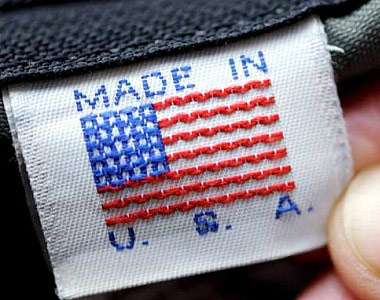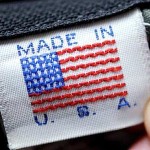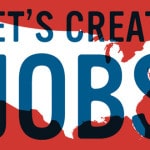Made in USA Sells Again
Last fall, Wal-Mart promised to purchase $250 billion in Made in USA products by 2023, a move it said would create 1 million U.S. jobs over time. Two-thirds of the goods in its domestic stores are already made, sourced, assembled, or grown in the United States, the company added.
Manufacturers were skeptical of Wal-Mart’s claims, noting that the two-thirds included many grocery items. “Sure, Wal-Mart is spending a big chunk of change on Made in USA products,” said the Alliance for American Manufacturing (AAM). “Where are the rest of the goods on its shelves coming from?”
But the fact is that the “Made in USA” is regaining a marketing mojo it hasn’t seen since the 1970s, when patriotism spurred by the nation’s bicentennial met with the first surge of quality, foreign-made automobiles, electronics, and other items in the domestic marketplace.
Eight in 10 Americans told Consumer Reports last month that would rather buy Made in USA goods than imports. “Buying American” contains the cachet of keeping jobs at home, helping the economy, and keeping America competitive, more than half of respondents said. And, in an important note for retailers, more than 60% said they would pay more for Made in USA goods.
An alternative to outsourcing
During the first decade of the century and the “Great Recession,” more consumers started to believe that the outsourced manufacturing leads to the loss of jobs in the United States. As a result, domestic manufacturing has become a badge of honor for companies and a selling point for consumers.
American Apparel was among the first retailers to emphasize Made in USA as a central cause in the Internet era. The company designs and manufactures all products in its Los Angeles headquarters, and pays thousands of employees higher-than-average wages with benefits.
RELATED ARTICLE: Made in USA Retailer Growing[p][/p]
“Our model is different,” American Apparel spokesperson Cynthia Semon told the Columbus Dispatch in 2006. “Being able to produce the best and highest-quality product in a work environment with those same standards is what’s important to us.”
The definition of ‘domestic’
It’s hard to find a product that is truly all-American, however. Most products include parts made overseas, and many “American” designs are built elsewhere. Apple advertises its iPhones as “Designed by Apple in California,” for example, but the smartphones are assembled in China.
“We see many goods which say ‘Made in the USA,’ but they’re actually made in China,” Hal Sirkin, a senior partner at the Boston Consulting Group, told Consumer Reports.
RELATED ARTICLE: Made in USA: What’s real. What’s not[p][/p]
The Federal Trade Commission (FTC) maintains standards for using an official “Made in the USA” label, requiring that all or nearly all components of a product bearing such a label be of U.S. origin, and that final assembly or processing must occur on U.S. soil.
On June 4, the Reinforcing American-Made Products Act of 2015 (SB 1518), was introduced in the Senate, seeking to clarify the “Made in USA” labeling standard to bring it in line with the FTC’s standards and superseding differing state standards.
But making the claim that products are American-made invites added scrutiny from shoppers and regulators. Lands’ End, Macy’s and Nordstrom have all been targeted by class-action suits charging they made false “Made in the USA” claims.
Buying local is American, too
Buying American is starting to take on an appeal parallel to the locavore movement’s sourcing strategy, in which home cooks and restaurant chefs buy organic, free-range, or artisanal food products from local providers in an effort to support nearby businesses and reward sustainable practices.
“Made in USA is about knowing the people behind the product,” Katharine Keegan, founder of style blog That Kind of Woman, said in a panel discussion at the Northern Grade market, a Minneapolis pop-up specializing in handcrafted, locally made apparel. “It’s a lifestyle; it’s being part of a bigger cause.”
RELATED ARTICLE: Selling Made in USA To The Fast-Fashion Crowd[p][/p]
E-tailers Zady, Everlane, and Of a Kind emphasize supply-chain transparency, offering details on materials and sourcing as part of their product content. And Etsy (valued at a whopping $1.8 billion upon its initial public offering in April 2015) takes the model a step further by giving the crafter-next-door a platform to sell their goods nationwide and beyond.
“Made in America will succeed for the same reason organic has succeeded,” Dave Schiff, a founder of the Made Movement ad agency, told Ad Age. “Just like people didn’t want to eat food that was poisoning them, they want to live in a better economic climate.”





Why are you shopping at WalMart? They are the reason why China is getting so rich.
98% of walmarts products are made in China~!
Make a promise today that you start reading labels and if it says “Made in China” you won’t buy it. There are still products made in the USA. Please. If not for yourself, then for your children and their childrens’ future.